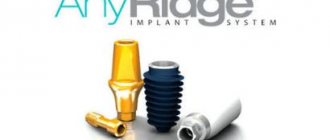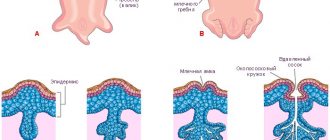Has the breast implant moved or rotated? Such a case is unlikely, but possible. If your plastic surgeon tries to convince you that endoprostheses after breast augmentation are always securely fixed and cannot move, even theoretically, do not believe him. We will explain what may cause such an undesirable phenomenon, and also tell you what the patient should do in this situation.
Reasons for Breast Implant Displacement
If the surgeon made a mistake during the operation , displacement of the implant may occur already in the early period of rehabilitation. The risk of rotation (displacement) of the endoprosthesis increases if the pocket is not formed correctly. Less often, the error is associated with the quality of the implant itself, defects and defects in its structure. Sometimes displacement occurs after incorrect fixation of the endoprosthesis.
If the patient has suddenly lost or gained excess weight after surgery , in rare cases there may be some changes in the breasts. We are talking about significant changes in body weight: from 20 kg or more. Such weight fluctuations can affect the outcome of mammoplasty.
If the patient did not follow the rules during recovery, took the mandatory postoperative restrictions lightly, got carried away with physical activity, slept on her stomach, and removed the compression garments too early.
If a pronounced capsular contracture develops, which is a fibrous membrane that forms around the endoprosthesis. Sometimes it moves under her pressure.
If the breast has been injured as a result of a fall, puncture, blow, or accident, the implant may not only move, but also be damaged.
The most important things about gluteoplasty
The operation of installing a buttock implant is performed under general anesthesia. Doctors implant an artificial fragment that is fully adapted to natural soft tissue, helping to improve the patient’s external shape.
Positive aspects of surgery
This correction allows you to get a bright result regardless of the initial condition and shape of the area being treated. The effect lasts for a long time, and if the operation is performed with high quality, by an experienced doctor, then the likelihood of complications occurring is minimal. The operated area of the buttocks does not lose its natural appearance. As soon as the rehabilitation is completed and the stitches heal, the marks from the surgical intervention will become invisible.
Indications for plastic surgery
There are no medical indications for gluteoplasty. This is an area of aesthetic surgery, and therefore the indications here are purely aesthetic. Typically, a patient is brought to the clinic by the desire to make his buttocks toned, firm, voluminous, rounded and attractive. People who go on the operating table for gluteoplasty, in most cases, have problems such as sagging, ptosis, age-related laxity, asymmetry and depressions.
Stages of the procedure
The process of installing buttock implants consists of standard stages: preparation, surgery, rehabilitation. First, a complete examination of the patient is carried out. You need to take urine and blood tests to determine the level of clotting and the presence of infection. Then they do an ECG, fluorography, and women undergo a pelvic ultrasound. It is during this period that the doctor and the patient determine the shape and size of future implants, as well as the exact area of their installation.
The patient must also prepare. You must quit smoking and drinking alcohol two weeks before the procedure. Sunbathing in the open sun or in a solarium is prohibited. You should not take medications that may affect blood clotting. You need to eat well, but not in excess. The last meal before surgery should be approximately 8-10 hours. The last action at the preparation stage is the doctor applying markings to the patient’s skin just before the operation.
How is the procedure performed?
The patient is given anesthesia and then the gluteoplasty procedure begins. The surgeon cuts the skin between the buttocks. The dissection is usually no more than 5 cm in length. Their location allows you to make future seams invisible. The doctor installs silicone implants into the previously formed cavities, first on one side, then on the other. At the end, sutures made of synthetic or absorbable material are applied. If large implants are used, drainage tubes are installed.
Recovery after surgery
The first days after surgery are difficult to bear, as there is swelling and pain, and the body temperature rises. The doctor prescribes special medications to help cope with unpleasant symptoms. To reduce swelling and speed up the healing process of endoprostheses, you need to put on compression garments immediately after the procedure and wear them for 1-2 months.
During the entire rehabilitation period, you must adhere to the following restrictions:
- do not lie on your back, but only on your side or stomach (at least one month);
- do not return to smoking and alcohol;
- do not overheat the body, for which exclude the sauna, solarium, hot bath;
- do not overcool;
- give up sports for three months;
- do not swim in a pool or open water.
The rules are simple but mandatory. If you ignore their observance, seroma may develop, asymmetry may appear, problems with gait may arise, etc.
Contraindications for gluteoplasty
Gluteoplasty cannot be performed on patients under 18 years of age. The fact is that before reaching adulthood, the body is still growing, it is not fully formed. Contraindications to the operation are diabetes mellitus, problems with blood clotting, the presence of tumors, chronic gastrointestinal pathologies, diseases of the central nervous system, acute respiratory viral infections, HIV infection, atherosclerosis, cardiovascular diseases, inflammatory processes, obesity, any damage to the skin or soft tissue in the buttock areas.
How can you tell if the implant has moved?
- Breast asymmetry appeared, which was not there before the operation.
- The mammary glands and (or) nipples differ significantly from each other in shape, size, and position.
- The thoracic endoprosthesis is visualized and palpated: its contours are clearly visible.
- Discomfort occurs when you are standing or lying on your back.
A well-known example of unsuccessful plastic surgery is the breasts of actress Tori Spelling.
The girl had severe breast deformation due to displacement of the implant. At first, she ignored this problem.
Symptoms Preceding Dental Implant Loss
Complete loss of the prosthesis is preceded by a number of signs. By paying attention to them in time, you can stop the development of the process and save the artificial root.
Signs of rejection:
- mobility of the prosthesis;
- painful sensations. If the implant is recently installed and the pain has not yet passed, a symptom of complications will be increased pain;
- discharge of pus from the gums in the area where the prosthesis is installed;
- increased body temperature;
- bad breath;
- redness and swelling of soft tissues;
- inflammation of the gums in the implantation area;
- severe bleeding and prolonged discharge of ichor.
What to do if the implant in the breast has moved?
Visit your plastic surgeon. If for some reason he cannot see you urgently, contact another specialist. Don't put off solving this problem.
Carry out a repeat operation. The expert will determine the exact reason for the rotation of the endoprosthesis and determine how to change the situation.
It may be necessary to remove the contracture and replace the implants. The course of action depends on the stage of the complication and the condition of the breast. Sometimes a simple operation is enough: the surgeon adjusts the position of the endoprosthesis under general anesthesia.
Deep installation of implants minimizes the risk of their rotation after surgery , as it ensures the most reliable fixation in the desired position.
Doctors: Butt implants can be deadly
A 49-year-old American woman had her buttocks enlarged with implants, but in addition to the new shape, she developed a rare, aggressive form of cancer previously associated with breast implants. Surgeons from the University of Southern California described the first case of anaplastic large cell lymphoma with implants in the buttocks in the Aesthetic Surgery Journal.
.
Anaplastic large cell lymphoma affects cells of the immune system. First, the lymph nodes enlarge, then the disease can affect internal organs and bones.
When chemotherapy is started on time, the five-year survival rate of patients, depending on the subtype of the disease, ranges from 33-49% to 70-80%.
Over the past eight years, the US Food and Drug Administration (FDA) has identified more than 450 cases of this cancer that were associated with textured breast implants. Their surface is rough and porous, which allows connective tissue cells to fill the voids and fix the implant.
The patient experienced symptoms of lymphoma a year after having implants installed in her buttocks. Doctors noticed ulcerations in the area of the implants, as well as fluid accumulated around them. The examination showed that the disease had spread to the lungs and other organs.
Despite intensive chemotherapy, the woman died a few months later.
The authors of the report note the particular aggressiveness of lymphoma in this case - the disease brought the patient to the grave in just a year, and in the case of breast implants, the disease makes itself felt only after 8-10 years. They do not presume to say that the implants were the cause of cancer, but the connection between lymphoma and breast implants suggests this.
“The woman's case helps demonstrate that many textured implants may potentially be a risk factor for anaplastic large cell lymphoma,” the doctors wrote. “The conversation needs to move from breast implant-related cancers to implant-related cancers in general.”
The authors emphasize that physicians should "recognize that patients with silicone implants in addition to breast implants are also at risk for anaplastic large cell lymphoma."
They insist that people who want to have such implants should be informed of the risks.
The authors call for more detailed research into how implants can trigger the development of anaplastic large cell lymphoma.
Textured butt implants likely carry the same risks as breast implants, said Dr. Alan Matarasso, president of the American Society of Plastic Surgeons.
“It's not about the tissue surrounding the implant or the time it remains in the body,” says Matarasso, recalling that the risk of developing anaplastic large cell lymphoma in women with breast implants increases after about eight years. “Inflammation and genetic characteristics are risk factors for the disease.”
Matarasso adds that now, fortunately, the buttocks are more often enlarged by excision and relocation of a musculocutaneous flap or by lipofilling - using the patient's own fat cells.
In the United States, more than 20 thousand buttock augmentation surgeries are performed per year. And, although fat grafting is the safest, implants are still popular, especially among thin patients who do not have enough reserves of their own fat for lipofilling.
However, lipofilling can also cause severe complications and death of the patient. The entry of fatty tissue into blood vessels (fat embolism) leads to their blockage and can provoke a stroke, heart attack, kidney or respiratory failure, depending on the location. If a fatty clot enters the heart cavity, it causes instant death.
warns about breast implants risk of developing anaplastic large cell lymphoma
back in 2021. In women who received breast implants, it developed in the scarred tissue around the implant. The age of the patients ranged from 25 to 91 years.
It is not yet clear what processes lead to the development of lymphoma.
This may be due to chronic inflammation, a common precursor to many types of cancer, or due to introduced bacteria. It is also unclear how long it takes for the disease to appear - the average was about seven years, but in one case it took 40 years.
Those who experience pain, swelling or any other changes in the implant area should immediately consult a doctor: in most cases, lymphoma was managed by removing the implants.
Types of dental implantation
There are two main methods of dental implantation – classical and one-stage:
- The classic one involves a two-stage implant installation. First, a titanium implant is screwed into the prepared bed. After osseointegration of the artificial root, the gum former is fixed in place of the plug, and then the abutment and crown. This is a universal implantation protocol that allows you to fill dental defects of any location and extent.
- One-stage implantation involves installing an implant and a temporary orthopedic structure in just 3-4 days. The operation is performed using a gentle microsurgical method, without tilting the mucous flap and applying sutures. The implant is inserted through a micropuncture in the gum or into the tooth socket immediately after its removal.
One-stage methods also include the All-on-4/All-on-6 concept, which is the best option for patients with complete edentia in one or both jaws.
Work examples
How often do you visit the dentist?
What is safer to choose for dental restoration?
The main goal of restoring missing teeth is to restore the full aesthetics and functionality of the dentition. Only one method of dental prosthetics can cope with this task 100% – dental implantation. Many patients are afraid of surgery, but in fact, the likelihood of complications can be completely eliminated, provided that both the doctor and the patient make every effort to achieve a positive result.
At first glance, traditional methods of dentures seem safer than dental implants. But in fact, there is a risk of complications in this case:
- Depulpation and grinding of supporting teeth significantly reduce their life expectancy, which subsequently leads to an increase in the length of the defect.
- The accumulation of bacteria under the denture contributes to inflammation of the gums and deterioration of their condition.
- Rapid atrophy of bone tissue occurs under the denture.
The myths that accompany implantation are, for the most part, simply far-fetched and have no basis. Provided you choose the right clinic and specialist, implantation of an artificial root is an absolutely safe and painless procedure, like most conventional dental procedures.











